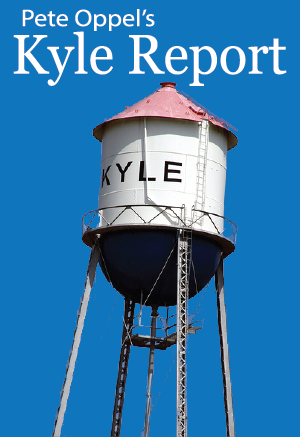 The Kyle Report is a column written by Kyle resident, Pete Oppel, that covers city leadership issues. You can follow The Kyle Report here on the Kyle Life or by subscribing to Mr. Oppel’s blog, The Kyle TX Report.
The Kyle Report is a column written by Kyle resident, Pete Oppel, that covers city leadership issues. You can follow The Kyle Report here on the Kyle Life or by subscribing to Mr. Oppel’s blog, The Kyle TX Report.
According to Assistant City Manager James Earp, the economic development cadre at the City of Kyle would consider the landing of a nice hotel somewhere within the city limits a huge feather in their cap. Not another La Quinta or a Best Western like we already have (both of which, incidentally, are doing quite well, Julie Snyder of the Kyle Chamber of Commerce told the city council on Tuesday night). But a real hotel, one with an in-house restaurant as well as meeting and banquet rooms which could become the sites of small conventions. A hotel that possibly even provides shuttle service to the Austin airport, the Circuit of the Americas or to UT and Texas State football games.
Problem is, every time the city approaches representatives of these types of hotels, the representatives come back and say “Sorry, the numbers just aren’t there to support that level of an investment in Kyle.” Not willing to take “no” for an answer, Earp said the city went first to the company that is consulting them on all things retail and that company said it really didn’t have the expertise to advise the city on the subject of hotels, But, it knew someone who did, Dr. Jeremy Stone, who runs a company called Stone Hospitality and Real Estate. Stone has a bachelor’s degree in environmental design, a master’s in land development and a doctorate urban and regional science. Granted, all three degrees are from Texas A&M, but I am willing to let that slide for the time being. His bonafides appear to be in order.
Last night, the Kyle City Council authorized dipping into the Hotel Occupancy Tax Funds to the tune of $15,000 to $20,000 to pay Stone to, in Stone’s own words:
- “Perform an in-depth evaluation of the market for operation of a hotel facility.
- “Investigate potential and existing demand on a local and regional scale to determine market sources of demand including transient, weekday/weekend meeting demand characteristics and other trends pertinent to the project.
- “Develop recommendations pertaining to the nature and extent of facilities and services that would be the most effective in attracting and accommodating the identified and existing market sources of demand, and evaluate the proposed facilities’ ability to meet future needs.”
Or, to put it more succinctly, to determine if what all these other hoteliers have been telling Kyle economic development people is true and, if not, exactly what hotel brand(s) would be the best fit for Kyle.
I asked Earp after the meeting what happens if Stone comes back and says “Yep, everything you’ve heard is true. Kyle is not a good prospect for a hotel of this type.” Doesn’t that mean you spent $15,000 to $20,000 for nothing?
Earp, ever the optimist, replied, “Well, at least we will learn what we have to do to attract such a hotel.”
Stone promised to deliver his analysis “within four to six weeks after receipt of your written authorization (signed proposal), retainer and the required information.” That means we could know something by the end of June or mid-July at the latest.
Watch this space.
